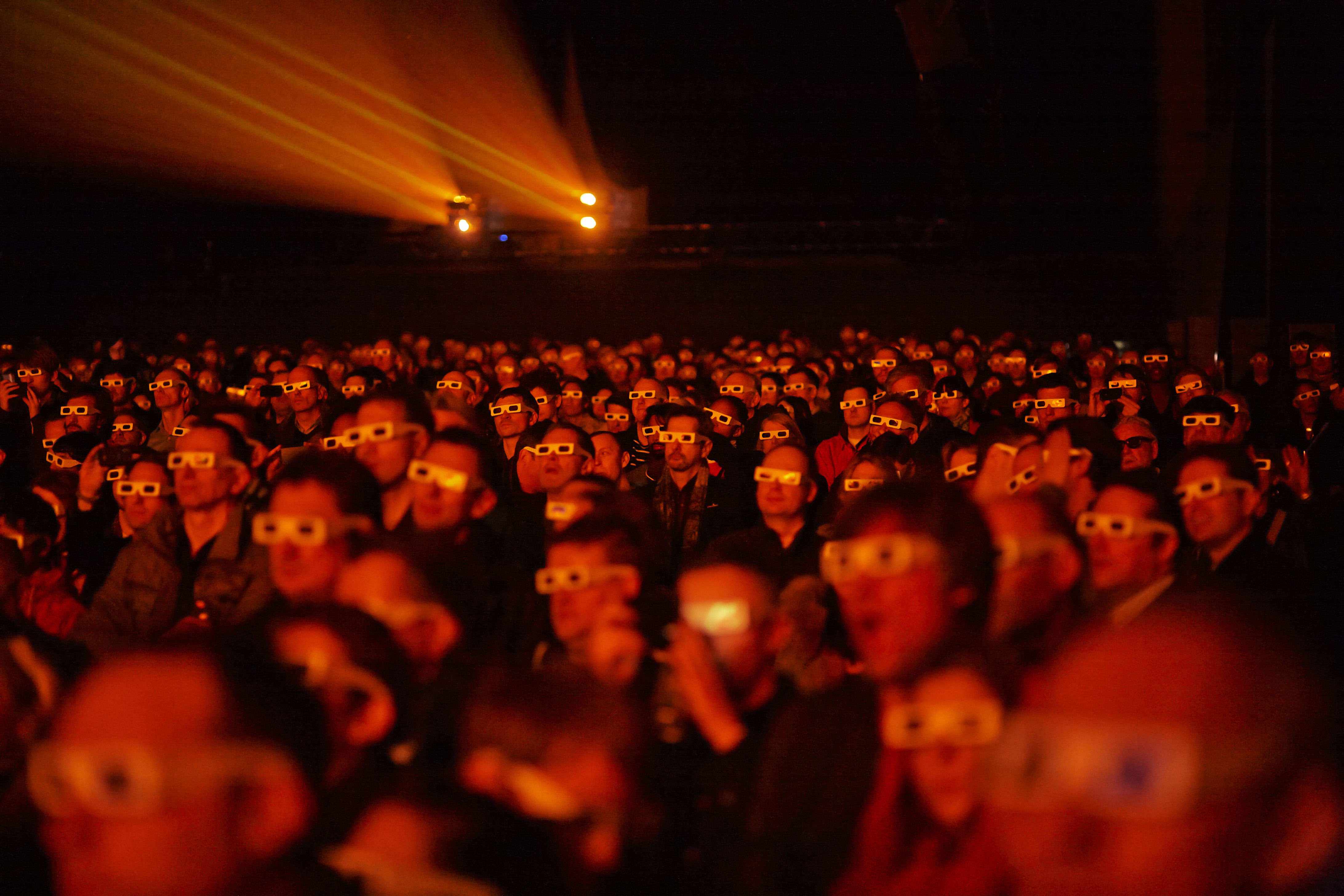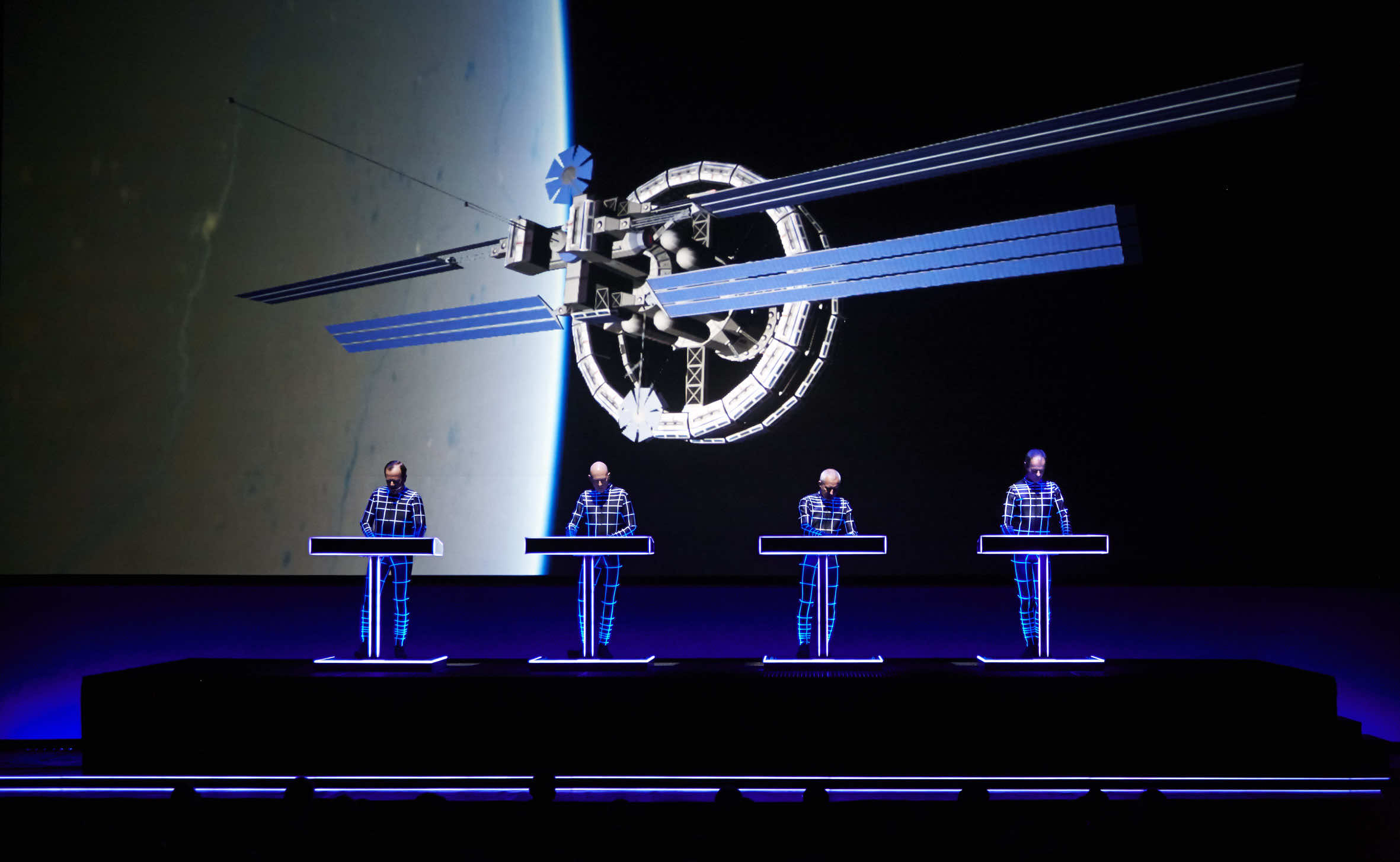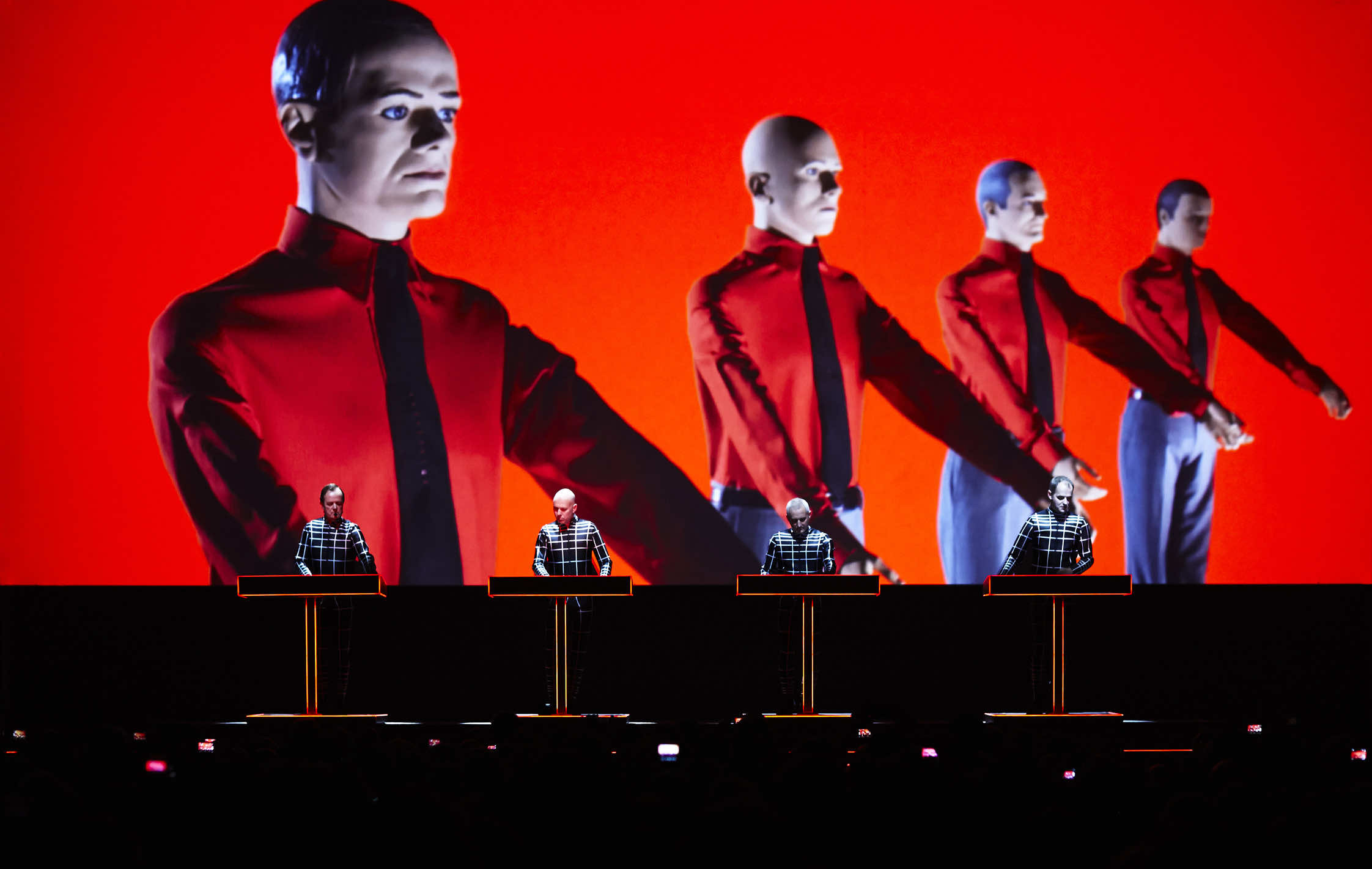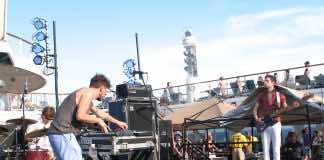There is no room for cynicism at a Kraftwerk performance. The quartet from Düsseldorf may not play “live,” but they sure put on a hell of a show. The other night they played back-to-back shows featuring a comprehensive set list of their hits at the Gusman Center’s Olympia Theater in Downtown Miami. What’s made this tour like no other in Kraftwerk’s history is that the images projected on the screen behind them are in 3D.
It may have been the trick necessary to finally put the audience’s focus on the music. The shadow of music history sometimes clouds how purely interesting the music of Kraftwerk is. A lot has been made of their contribution to electronic dance music, sampled by everyone from New Order to modern hip-hop artists. But why Florian Schneider and Ralf Hütter, the art school duo who started Kraftwerk, became so influential is hardly ever really picked apart by the mainstream media (see something like this for that). To be reductive: It’s in the incessant minimalism that much of their early improvisation veered off into that made their music interesting. It later became a formula for them to perfect, dropping such practical instruments like flute and electric guitars for homemade drum machines.
When the group kicked off the night with “Numbers,” two dudes tried to stay up after the standing ovation in the center part of the orchestra seating. People yelled at them to sit down. “We’re gonna dance, man!” The cold, spare, slowed down take on the Computer Love (1981) track defied such a silly idea, and before the cut took off, the two guys had given up. This was a sit down show where the 3D visuals demanded being soaked in. Everyone wanted a clear view of the visuals, and Kraftwerk immediately delivered. Behind the four gentleman in their signature black grid onesies and their nondescript keyboard/synth/computer podiums, a wall of green undulating numbers waved like a techno sail powering a musical journey that would be like no other.

When representing objects, the digital graphics often looked like something composed on a Comodore 64, an 8-bit computer from the early 1980s, and early on, the images maybe too often focused on literal transcription of the minimalist lyrics sung by Hütter, the only original member of the group that was on stage that night. But that’s also part of Kraftwerk’s shtick: they compose music that also reveals the rough edges of technology. The more primordial, the more revealing. At the same time, it highlights the humanity of their music, from dreams of outer space (“Spacelab”) to the joys of driving toward the horizon (“Autobahn”) to the desire of a simplified human connection (“Computer Love”).
To Hütter’s left was Fritz Hilpert then Henning Schmitz and finally Falk Grieffenhagen, who is largely known as the one responsible for synching the 3D images with the music (see this article). You didn’t really think all four are playing keyboards? (take a look at their setup for a peek behind the curtain). Enough cannot be said about Grieffenhagen’s musical contribution, his shifting of images to the music often garnered the loudest, most ecstatic cheers from the audience. What he does is musical. This is a production, a light show with music digitized from the analog tapes that are manipulated on stage with Hütter, who co-wrote most of these songs, doing most of the musical lifting, playing melodies on a keyboard and often singing through the filter of a vocoder that makes his voice sound robotic to meld with the mechanical music. Kraftwerk have no pretense when it comes to what they do. Even the spaceship dashboard of “Spacelab” has a cheap graphic of a reel to reel. The analog is digital. That’s Kraftwerk.

Speaking of “Spacelab,” that was a genuine highlight of the show. On several occasions the spacelab came hurtling through the giant screen and many members of the audience could not help from reaching out to see if they could touch it. In a wry bit of pandering there was also a map on-screen during “Spacelab,” highlighting Miami with a marker, and another image closing the song showing the outside of the venue with a digital UFO touching down outside.
Kraftwerk indeed wanted to take the audience on a virtual journey, and the simple graphics and the cheap paper 3D glasses did the trick. During “Autobahn,” the quartet looked like a group of dashboard ornaments cruising the digitized version of the 1974 album art. They also did the complete 20-plus minute track, which prompted several moments of applause from members of the audience who thought the song had finished already. But it was never a dull track, even without Schneider’s original flute bits. There were cuts to an old time in-dash radio that emitted floating musical notes that got cheers, and the teases of the motorik rhythms that came and went were ebullient.
This was a show to get lost in the ethos of what is Kraftwerk. They don’t need new music (they haven’t released an album since 2003’s Tour de France Soundtracks). They have perfected what they are, keeping a staid catalog alive with this reinvented vision (no wonder Hütter wants to see the group’s catalog reissued on blu-ray with 3D functionality). Even if they couldn’t dance, the audience released themselves to the vision of Kraftwerk, and it was even easy for this cynic who prefers the organic surprises of real instruments.
The tour continues thus:
October 2 Electric Factory, Philadelphia, PA
October 3 Wang Theatre, Boston, MA
October 5 Masonic Temple Theatre, Detroit, MI
October 7 Northrop, Minneapolis, MN
October 9 Arvest Bank Theatre at the Midland, Kansas City, MO
Kraftwerk then head to Europe in November. To see all those dates, visit this link: kraftwerk.com/concerts. You can also purchase tickets for the remaining U.S. dates and Europe via that same link.
The Goldenvoice invited Independent Ethos to the 8 p.m. concert for the purpose of this review. They also provided the images used to illustrate this post. All photos are copyright Peter Boettcher for Kraftwerk except the glasses and ticket; that’s the writer’s.












BTW they used six Panasonic PT-DZ13KE Professional video projectors to make those awesome 3-D projections. They are valued at approximately $50k each. do the math.
It was incredible quality, better than what I’d see in the theaters with fancy plastic glasses.
Reblogged this on LBoogie's Pop World.
Terrific review of what sounds like a fascinating concert. Seems they’ve moved on quite a long way visually from the concert I enjoyed in Melbourne a decade ago. Wonder if they will venture downunder again with this show. Hope so!
Thanks.
I hope so too. It’s quite an experience.